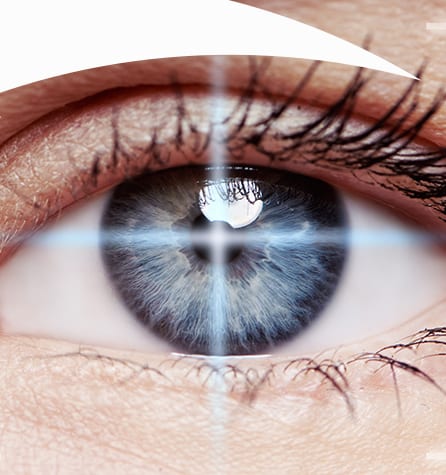Diabetic Eye Exams
Specialized Eye Care for Patients with Diabetes
DID YOU KNOW up to 40% of people with Type 2 Diabetes may already have diabetic retinopathy? In fact, for 1 out of 5 patients, the disease is already there when they’re first diagnosed with diabetes.
Managing diabetes effectively can be challenging but taking care of your eyes does not have to be.
While diabetes can cause potentially severe conditions such as diabetic retinopathy (a progressive diabetic eye disease and the leading cause of blindness in American adults), it can also be easily monitored and managed with annual diabetic eye exams.
It is important for patients with diabetes to have a comprehensive diabetes-specific eye exam at least once per year. These exams are required by Medicare and other medical insurance plans as part of your total diabetes care.
The Medical Optometrists at MOA have extensive experience and specialized equipment to manage the eye health of patients with diabetes. We work collaboratively with your care providers – your primary care physician, endocrinologists, and diabetes educators – to develop a complete care plan.
Symptoms of Diabetic Retinopathy
For the most part, early-to-moderate diabetic retinopathy is asymptomatic; you may not notice any symptoms until you have already lost a significant portion of your vision. However, some of the early, more noticeable symptoms may include:
- Floaters in your eyes
- Blurriness in your vision
- Dark or blank spots in your vision
- Inconsistent vision
- Changes in color vision
At MOA, we understand that thinking about your eye health and the risk of blindness can be frightening for patients with diabetes. We want to help alleviate that anxiety. With a regular schedule of diabetic eye exams, we can track and maintain your eye health and detect potential problems before they can compromise your eye health or vision.



How Does Diabetic Retinopathy Develop?
The back of your eye is covered with several thin layers of tissue. These tissues make up the retina, which is responsible for detecting light and is full of small, delicate blood vessels.
Over time, high or irregular blood sugar levels can damage these blood vessels. If not addressed, this damage can cause bleeding and scar tissue, which can permanently damage your vision.
The best way to prevent diabetic retinopathy is to keep your diabetes under control, and be sure to get your annual diabetic eye exam to catch these changes at their earliest stages.
Stages of Diabetic Retinopathy
Diabetic retinopathy occurs when blood sugar levels are not managed effectively, damaging the blood vessels in your retina and prompting them to leak fluid. Your body tries to replace these damaged blood vessels by growing new ones. However, the new blood vessels are often irregular and weak. When they become damaged, they can leak easily, causing scar tissue that impairs your vision. There are two forms of this disease – Non-Proliferative and Proliferative Diabetic Retinopathy.
Non-Proliferative Diabetic Retinopathy
In Non-Proliferative Diabetic Retinopathy, the blood vessels in the retina are weakened. Tiny bulges in the blood vessels, called microaneurysms, may leak fluid into the retina. This leakage may lead to swelling of the macula.
Proliferative Retinopathy
Proliferative Diabetic Retinopathy is the more advanced form of diabetic retinopathy and is a result of decreased circulation to the retina tissue, depriving it of oxygen. As oxygen levels decrease, new fragile blood vessels begin to grow in the retinal tissue. These vessels are not strong and often can break causing bleeding into the eye and sudden loss of vision. These vessels also cause scar tissue that can contribute to retinal detachments and vision loss.
Diabetic Macular Edema
At any level of Diabetic Retinopathy diabetic macular edema can be present. This is a result of swelling to the retinal tissue that obscures the macula , a small area of the retina responsible for central vision that allows you to read, recognize faces, and notice fine details. Any damage to your macula can have a significant impact on your vision.
Medical Optometry America Recommended Tools & Therapies
MOA practices use the following technology and therapies to diagnose and manage diabetic eye diseases:
- OCT (Retina Scan): A non-invasive imaging test that allows your eye doctor to see each of the retina’s distinct layers, providing treatment guidance for diabetic eye diseases.
- OCTA: Angiography imaging that provides a thorough assessment of the retinal vascular health.
Fundus Photography: The use of a retinal camera to photograph different regions of the eye. This test is considered medically necessary for diagnosing diabetic retinopathy, along with several other conditions. - Nutritional Therapy: Medical Optometry America offices carry the #1 nutritional products on the market (nūmaqula and nūretin by PRN) to support retinal health.
